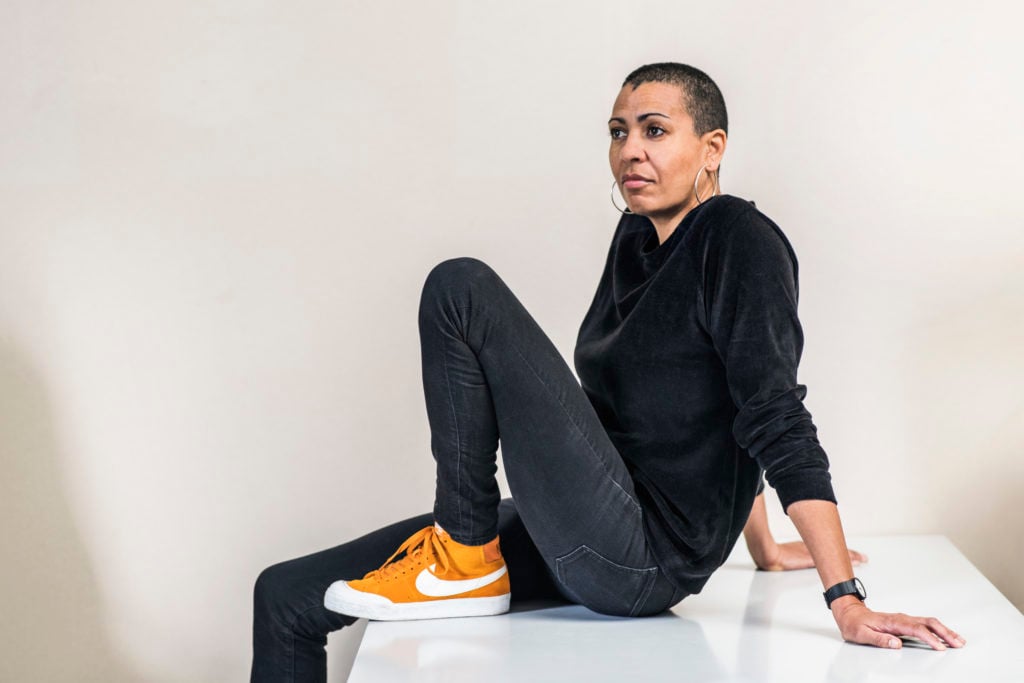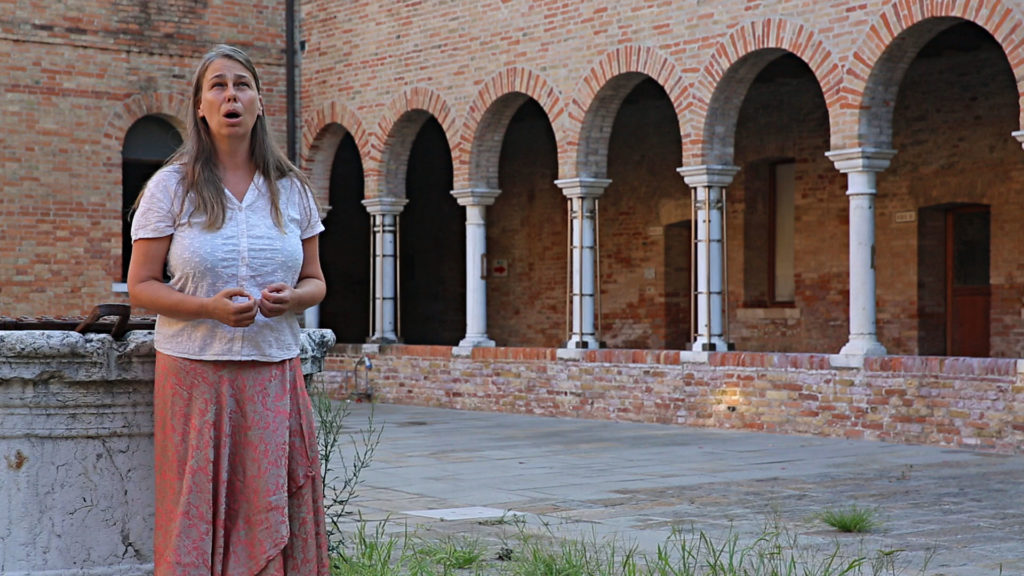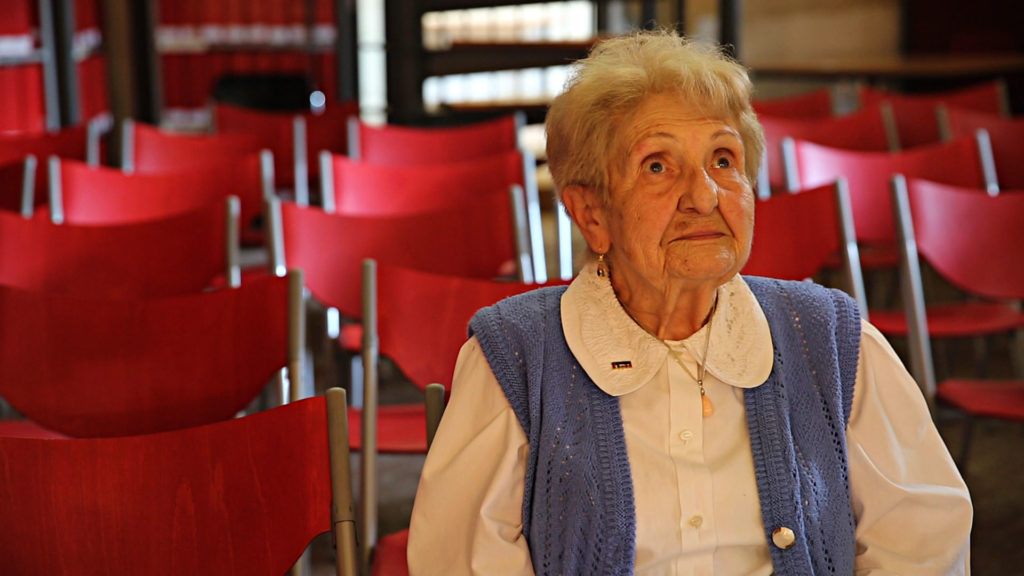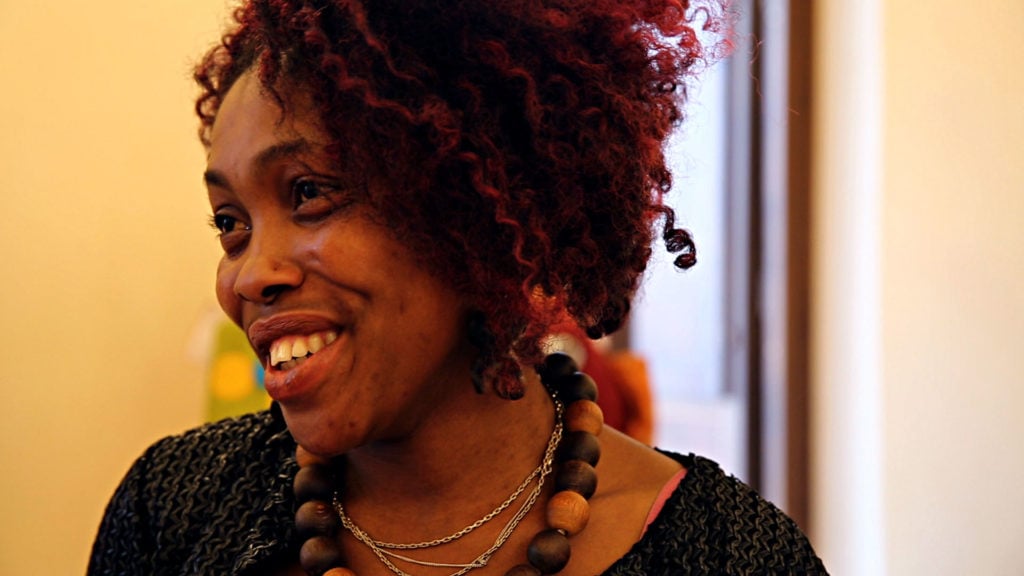People
‘All Art Is Political’: Meet Artist Helen Cammock, Who Went From Social Worker to Turner Prize Nominee
The artist talks about her untraditional path into the art world and how she found her voice.

The artist talks about her untraditional path into the art world and how she found her voice.

Naomi Rea

My eyes flood with tears as Helen Cammock’s voice fills the auditorium at London’s Whitechapel Gallery. Accompanied by a jazz musician, the 37-year-old artist is singing an aria from a pre-opera lament by a forgotten 17th-century composer named Barbara Strozzi. She has borrowed an Italian lyric from the song, “che si può fare” (what can be done?), for the title of her exhibition at the gallery.
Cammock is one of the four artists shortlisted for the prestigious Turner Prize this year—along with Oscar Murillo, Tai Shani, and Lawrence Abu Hamdan—but the show in London is celebrating her for a different reason. Last year the artist won the Max Mara Art Prize for Women, and as part of it has been busy working on a six-month Italian residency.
In recent years, Cammock’s practice has come to focus on raising up oppressed voices, usually female. The film that earned her the Turner nomination hones in on women’s role in the struggle for civil rights during the Troubles in Northern Ireland, and her latest work gives a platform to women in Italy, from the baroque period through Mussolini’s dictatorship to the present day.
“The women’s prize is really important,” Cammock tells me. “Because, yes, there are two men and two women who are nominated for the Turner Prize this year, but unequal representation is not something that is in the past. Men still earn more, they have more institutional shows, and they are represented vastly more often in commercial galleries. A prize like this is doing something to try to redress that.”
Cammock took a winding path into the art world. Before she decided to go to art school in 2005, she earned a sociology degree from the University of Sussex and worked for 10 years as a social worker in Brighton.
Since being nominated for the Turner Prize, Cammock has heard messages of support from people inspired by her untraditional trajectory in the art world. “I think my story speaks to people because it shows that you don’t have to have made a decision by the time you’re 22 about what you want to do for the rest of your life,” Cammock says.
In her statutory work, Cammock specialized in group work programs, dealing with issues related to domestic violence through to supporting young men’s projects. Skills she developed as a social worker have become useful in her artwork. In order to highlight oppressed voices, you first have to gain people’s trust, and Cammock explains that the most important thing is understanding how to be clear and honest about what she is doing and why. “People can be very suspicious of artists,” she explains. “There’s an idea that it’s really surface or superficial, or that it’s a way of stealing, like cultural thievery. But I want it to be an exchange.”

Helen Cammock, still from Chorus (2019). Courtesy of the artist, ©Helen Cammock.
Patience is also key, as part of her process is spending hours researching in archives and libraries, and conducting interviews. But transforming these stories into works of art has been empowering for her in a way that social work rarely was. “I don’t feel so weighed down by people’s experiences now, and I think it’s because I can actually do something with it,” she says.
In her artistic practice, Cammock weaves both still and moving image with text. She explains that she fell in love with video art soon after embarking on her photography degree at Brighton University. “I felt like I couldn’t say enough just with a still image,” she says.
Her affinity for text was something she discovered while studying for her Master’s degree at the Royal College of Art. She was juggling the coursework while running a photography festival in Brighton, and a sympathetic tutor excused her from having to make work for the remainder of the course if she promised write something every day. “That was the beginning of it,” Cammock says.
While her early work focused on her own personal experiences, such as confronting racism from an early age, nearly a decade on Cammock is confident in her own voice, and has been using it to raise up those of others. The centerpiece of the exhibition in London is a new three-channel film, titled Chorus. Mesmerizing footage captured across six Italian cities, interwoven with snippets of interviews with various women about loss and resistance, is stitched together with music by female composers.

Helen Cammock, still from Chorus (2019). Courtesy of the artist, ©Helen Cammock.
After speaking to women who fought a fascist regime under Mussolini, as well as to migrants whose traumas are even fresher, Chorus ends up taking on a political tenor, especially considering the contemporary political landscape in Italy, where a far-right party is once again leading the country.
“I think all art is political,” Cammock says. “Even if you make work that doesn’t speak of politics, if you’re not speaking you’re making a political decision.” But the artist feels her message is wider in scope than just a criticism of Italian politics. “It’s a global statement, and it’s the same statement I would make about this country” she says. “We are also living in the politics of the far right, we are just in a different geographical location.”
“The call to action is to everyone,” Cammock says. “It’s not about identifying Italian politics or Italian culture as any more extreme because I believe we are all in a very dangerous and poisonous moment.”
The film for which Cammock was nominated for the Turner Prize, The Long Note, similarly gives focus to unheard female voices. It tells the forgotten story of women’s role in the struggle for civil rights during the Troubles in Northern Ireland. It is a timely work in the context of Brexit, and the neglected question of how to negotiate the border between Northern Ireland, which is part of the UK, and the Republic. “The thing about the Turner Prize is that the platform is bigger and more people will get to see it, and that’s the thing I’m so happy about,” Cammock says.
The announcement of the Turner Prize shortlist in May was overshadowed by the question its controversial sponsorship by a bus company founded by an anti-LGBT activist. After members of the press raised concerns, the sponsorship was swiftly canceled. Far from being upset that her moment was somewhat buried in the furor, Cammock says that asking these questions is “really important,” especially given that the work of all four nominated artists focuses on bringing attention to marginalized voices.

Helen Cammock, still from Chorus (2019). Courtesy of the artist, ©Helen Cammock.
She says she is happy that the issue was resolved, but added that it’s important to recognize that there’s a cause for the situation that institutions are increasingly finding themselves in.“If there weren’t so many governmental cuts, and such a lack of commitment and support of the arts generally, institutions wouldn’t be so compromised, and that’s the cause that’s probably making me the most angry.”
“Helen Cammock: Che si può fare” runs through September 1 at Whitechapel Gallery, London. The exhibition will travel on to the Collezione Maramotti in Reggio Emilia, in October.
“Turner Prize 2019” runs September 28, 2019, through January 12, 2020 at Turner Contemporary, Margate.